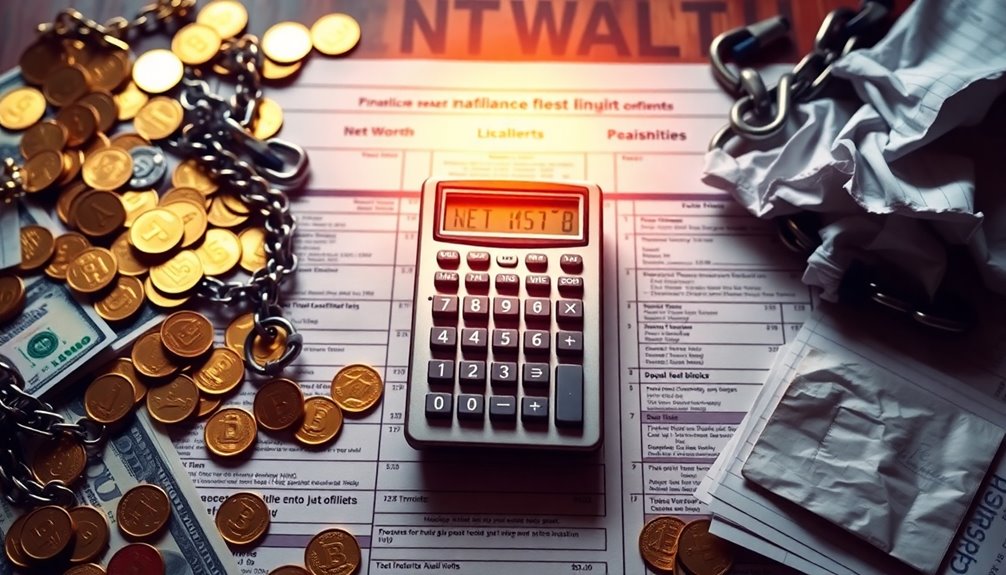Recent changes to student loan forgiveness programs mean you have new options and clearer pathways to relief. Income-driven plans now track progress more simply, and forgiveness after a set period is more transparent. Public Service Loan Forgiveness has expanded and become easier to qualify for, while updated policies reduce delays. Staying informed about these updates guarantees you won’t miss opportunities for debt relief—there’s more to explore if you want to make the most of your options.
Key Takeaways
- Recent policy updates clarify forgiveness procedures and expand eligibility, making it easier for borrowers to understand and access relief options.
- Income-driven repayment plans now more transparently track progress toward forgiveness, helping borrowers plan their repayment strategies.
- Public Service Loan Forgiveness (PSLF) rules have been simplified, with expanded qualifying employment categories and easier application processes.
- Eligibility periods for forgiveness have been extended, allowing more borrowers to qualify sooner under various programs.
- Staying informed about these updates is essential to avoid delays, ensure eligibility, and maximize student loan forgiveness benefits.

Recent developments in student loan forgiveness programs could notably impact your financial future. If you’re steering through the complexities of student debt, understanding the latest updates is crucial. One significant change involves income-driven repayment plans, which are designed to make your monthly payments more manageable based on your income and family size. These plans can be especially helpful if you’re struggling to keep up with standard repayment schedules. Furthermore, recent policy adjustments aim to clarify how payments made under income-driven repayment count toward forgiveness, making it easier for you to track your progress. Knowing that your payments could eventually lead to forgiveness after a certain period can provide peace of mind and motivate you to stay on track with your repayment plan.
Additionally, the updates emphasize eligibility for public service loan forgiveness (PSLF). If you work in a qualifying public service job—such as government or nonprofit sectors—you might be eligible for forgiveness after making 120 qualifying payments. Recent reforms have simplified the process, reducing some of the bureaucratic hurdles that previously complicated PSLF applications. This means you no longer need to jump through as many hoops to qualify, provided you meet the criteria and submit the necessary documentation properly. The government has also expanded certain qualifying employment categories, so if you’re involved in public service, it’s worth reviewing the new guidelines to see if you qualify for forgiveness sooner. Incorporating technology and policy updates into your understanding can help you navigate the evolving landscape of student loan forgiveness more effectively.
Another important aspect to evaluate is the recent extension of eligibility periods and the potential for broader forgiveness programs. These updates could mean that more borrowers, especially those who have been in income-driven repayment plans or public service roles, might qualify for forgiveness sooner than expected. They’re also designed to address previous issues of confusion and delays in processing forgiveness applications, giving you a clearer pathway to relief. Keep in mind, staying informed about changes means you can better plan your financial future and avoid missing out on benefits you’re entitled to.
Frequently Asked Questions
How Will Forgiveness Impact My Credit Score Long-Term?
You might wonder how forgiveness affects your credit impact long-term. Typically, student loan forgiveness can improve your credit score by reducing your debt, but it might temporarily dip if your account is reported as settled. To protect your financial planning, stay informed about how forgiveness is reported. Over time, consistently managing other debts and payments will boost your credit, making forgiveness a beneficial move for your overall financial health.
Are There Income Limits to Qualify for Forgiveness Programs?
You might wonder if income limits affect your eligibility for forgiveness programs. Generally, these programs have income thresholds and specific eligibility criteria that you must meet. For example, some forgive loans for borrowers with low or moderate incomes, while others target certain professions. To find out if you qualify, check the program’s income limits and eligibility criteria carefully, as they vary depending on the forgiveness plan you’re interested in.
What Documentation Is Required to Apply for Forgiveness?
When applying for forgiveness, you need to understand the application process and gather the required paperwork. Typically, this includes proof of income, loan details, and employment documentation. You should carefully review the specific guidelines for your program, as the required paperwork can vary. Make sure to submit a complete application to avoid delays, and keep copies of everything you send for your records.
Will Forgiven Loans Be Taxed as Income?
Think of student loan forgiveness as a gift that could come with a tax surprise. Currently, forgiven loans might be taxed as income, depending on tax implications and income thresholds. You need to stay alert, as rules can change. Consult a tax professional to understand how forgiveness impacts your taxes, especially if your income exceeds thresholds that could trigger additional taxable income. Planning ahead helps avoid surprises when tax season arrives.
How Do Recent Policy Changes Affect Existing Student Loans?
Recent policy changes can impact your existing student loans by offering new options like loan consolidation and updated repayment plans. You might find it easier to manage your debt through these options, potentially lowering monthly payments or extending repayment periods. Stay informed about eligibility criteria and deadlines, so you can take advantage of these updates to better tailor your loan repayment strategy. Act now to maximize the benefits for your financial situation.
Conclusion
As you navigate student loan forgiveness options, stay informed about the latest updates. Did you know that over 43 million borrowers collectively owe more than $1.7 trillion in student loans? Keeping up with policy changes can save you thousands and ease your financial burden. Stay proactive, review your eligibility regularly, and don’t hesitate to seek guidance. Being informed empowers you to make the best decisions for your financial future.









